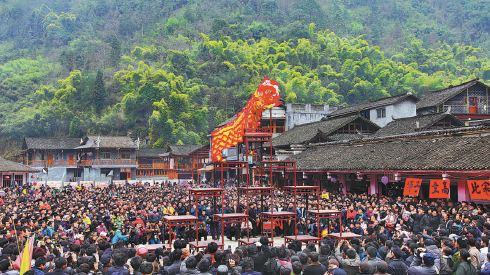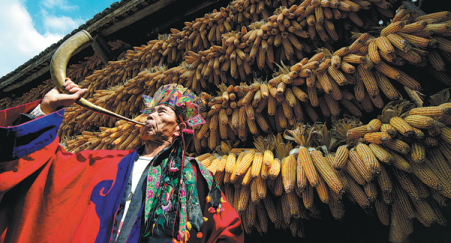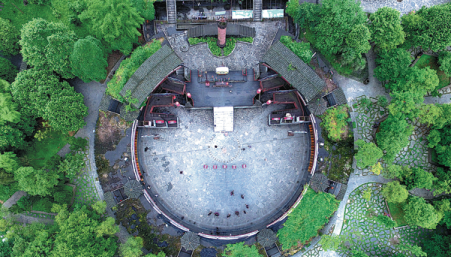A miraculous crossing in Hunan province creates opportunities in expanding revenues in the countryside
One of countless engineering marvels in China, the Aizhai Bridge in Hunan, which opened in 2012, has not only vastly improved transport in a particularly mountainous area of the province, but also become somewhat of a tourist attraction itself.
Located in Hunan's Xiangxi Tujia and Miao autonomous prefecture, the Aizhai Bridge has a span of 1,176 meters above a 355-meter drop to the Dehang Grand Canyon floor below.
The spectacular structure, which on certain days appears to hang in the clouds, was built to solve a practical problem.
Since the Hunan-Sichuan highway, the G319, opened in 1936, transport between the two provinces was facilitated but not efficiently. In order to navigate the Aizhai mountain, the highway steeply winds for a length of 6 kilometers with 13 hairpins. In that short stretch, the elevation between the first and last hairpin changes by a staggering 440 meters-thus enabling vehicles to summit or descend the mountain.
However, this was time-consuming and many larger vehicles were unable to navigate that section of the highway. And so, in 2007, work began on the Aizhai Bridge.
The effect of its opening just five years later was immediate, with the travel time from Changsha in Hunan to Chongqing cut from 16 hours to eight.
The bridge not only links Hunan with Chongqing and the central and western regions of China, bringing with it economic development, but also poverty alleviation and tourism.
The Aizhai Bridge has opened up access to and for some remote areas of rural western Hunan.
The area is home to Fenghuang ancient town, the ruins of Laosi town and other famed historical towns such as Liye, Pushi and Chadong. The scenery attracts millions of visitors every year.
Local governments in the area have cooperated with villages and tour companies to create industries based around rural tourism, enriching the lives of the locals who had previously been hidden and hard to reach.
The Aizhai Wonders Tourist Area has been built in the surrounding area of the bridge, which blends the customs of the Miao ethnic group and the spectacle of canyon scenery.
In the dialect of the Miao ethnic group, Dehang means a beautiful canyon. Dehang Grand Canyon is home to dozens of Miao villages and rich Miao culture.
Every spring festival, a lion dance is held in Dehang Grand Canyon that attracts participants from every village, as well as tourists. Music plays an important part in the culture of the Miao ethnic group, and Miao drumming has had its own festival in the nearby city of Jishou since 2013.
Yang Xin, a local drum player, has taught more than 2,000 people how to drum the Miao way and regularly performs at the Aizhai Wonders Tourist Area.
"I hope our drumming performance can encourage more and more people to understand and enjoy our culture," Yang said.
Xu Zhengyu, a staff member at the tourist area, said: "Nowadays, the visitors to western Hunan are not only more numerous, but also coming from further afield."
Official data shows that there are an average of about 14,000 crossings of the Aizhai Bridge each day.
From January to August in 2019, there were 3.5 million visits to the Aizhai Wonders Tourist Area, creating more than 300 million yuan ($45.8 million) in tourism revenue.
Zhu Youfangcontributed to this story.




来源:chinadaily.com
编辑:谭婕倪